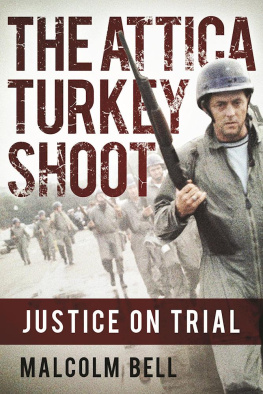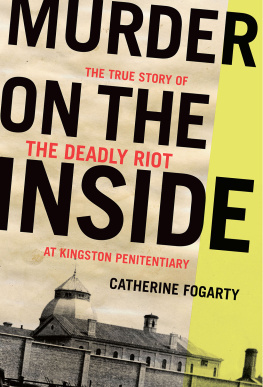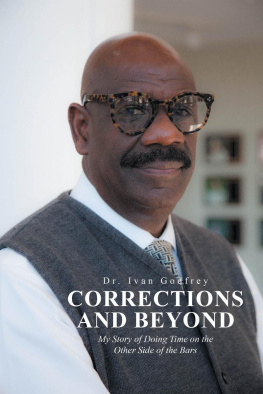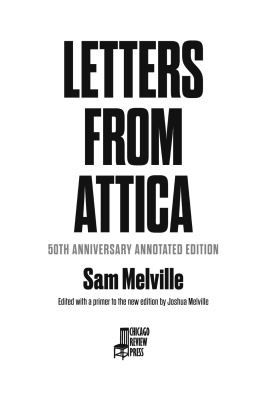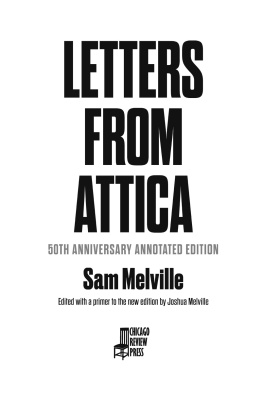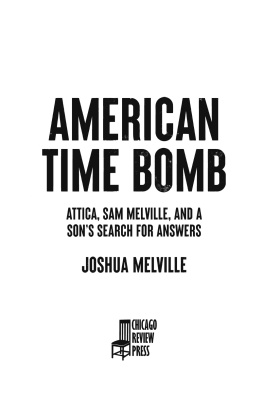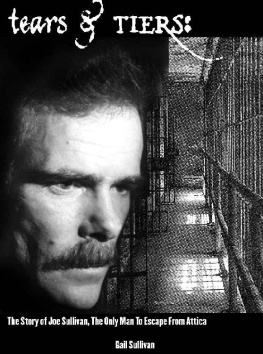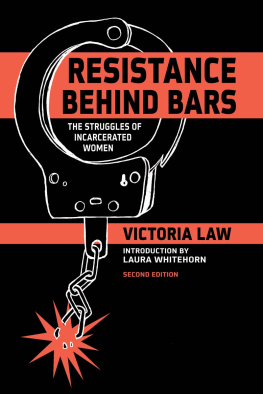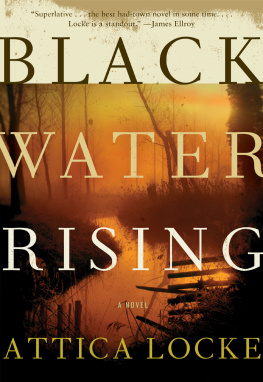Copyright 1985, 2017 by Malcolm Bell
Foreword 2017 by Heather Ann Thompson
The previous edition of this book was published by Grove Press as The Turkey Shoot: Tracking the Attica Cover-up
All rights reserved. No part of this book may be reproduced in any manner without the express written consent of the publisher, except in the case of brief excerpts in critical reviews or articles. All inquiries should be addressed to Skyhorse Publishing, 307 West 36th Street, 11th Floor, New York, NY 10018.
Skyhorse Publishing books may be purchased in bulk at special discounts for sales promotion, corporate gifts, fund-raising, or educational purposes. Special editions can also be created to specifications. For details, contact the Special Sales Department, Skyhorse Publishing, 307 West 36th Street, 11th Floor, New York, NY 10018 or .
Skyhorse and Skyhorse Publishing are registered trademarks of Skyhorse Publishing, Inc., a Delaware corporation.
Visit our website at www.skyhorsepublishing.com.
10 9 8 7 6 5 4 3 2 1
Library of Congress Cataloging-in-Publication Data is available on file.
Cover design by Rain Saukas
Cover photo credit: AP Images
Print ISBN: 978-1-5107-1614-8
Ebook ISBN: 978-1-5107-1617-9
Printed in the United States of America
THIS BOOK IS DEDICATED
TO THE GOOD GERMAN.
EVERYONE CHOOSES
WHETHER TO
BE ONE.
And to the memory of Lenny Brown, John Edland,
Liz Fink, Don Jelinek, Robert McKay,
Frank Big Black Smith, Tom Wicker,
the Attica Supplemental Grand Jury, and
the others who strove for the truth and justice
that are too often denied.
Contents
Foreword to the Second Edition
The decades of the 1960s and 1970s were rife with both rebellion and repression. From Birmingham to Selma, from Kent State to Wounded Knee, time and again dispossessed Americans challenged injustice, and, time and again, their efforts to better the world in which they lived were met with a sometimes staggering amount of state violence. This is not to say that the many struggles citizens waged for a more just future were foolhardy. Indeed, despite the great odds they faced and the intense backlash they touched off, these grassroots battles made a real mark on history. Perhaps none better exemplifies this truth than the Attica prison uprising of 1971.
At Attica, as in cities all across the nation in the early 1970s, ordinary peopleoverwhelmingly poor people and people of colorsuffered indignities, injustices, and inhumane treatment at the hands of state officials thanks to decades-old discriminatory policies and practices. At Attica, as at Watts and Newark the decade before, those who endured these wrongs eventually erupted in protest. And, at Attica, as at Kent State and Wounded Knee in the same decade, the states determination to maintain power and control led to unimaginable bloodshed. At Attica, as at virtually every other uprising in which the state reasserted its power with such ugly force, officials worked hard to ensure that all fault for the violence that they wrought rested at the feet of the protesters themselves. At Attica, however, the truth of what actually happened eventually would be told. This book by Malcolm Bell, The Attica Turkey Shoot: Carnage, Cover-Up, and the Pursuit of Justice , is central to this truth-telling.
Bell, hired back in 1973 by the State of New York to prosecute any cases that might arise from its official investigation of crimes committed during the Attica uprising and retaking, took his job most seriously. Even though his employers seemed interested only in prosecuting inmates for laws broken during their rebellion, Bell was determined that the troopers who had killed thirty-nine hostages and inmates when they retook the prison would also be held accountable for their crimes. That, however, was not to be. State officials were deeply reticent to investigate and prosecute troopers, and the more Bell suggested the imperative of doing just that, the more his employers isolated him. Eventually Malcolm Bell had to blow the whistle on the states unwillingness to indict its own, and his expos of the lengths to which it went to cover up trooper crimes committed at Attica would change the course of history. With this republication of Malcolm Bells insider account of the Attica investigation and cover-up, readers today have an invaluable historical document. Even though the history of the tumultuous 1960s and 1970s is long over, Bells book, updated as it is with a rich and poignant new epilogue, reminds us all that the past continues to shape the present in ways both woeful and wonderful and, as the book makes clear, that we must know the past if we ever hope not to repeat it.
Dr. Heather Ann Thompson
Professor of History
University of Michigan
Foreword to the First Edition
Malcolm Bell is an American hero, a brave man who risked his livelihood, his profession, and the good opinion of his peers for the sake of truth and justice. This is his account of how he sought to prosecute New York State Police officers and other state officials for crimes ranging up to murder in the retaking of the Attica State Correctional Facility on September 13, 1971; and of how he tried to expose the blatant cover-up of those crimes by the state prosecution teama cover-up that may well have involved two occupants of the Governors mansion at Albany and almost certainly was furthered, if not instigated, by Louis Lefkowitz, New Yorks long-time Attorney General.
Bells story has political implications beyond Attica and New York. The key episode in the official cover-uptold in detail in took place on August 22, 1974, just two days after Gerald Ford, who had succeeded to the Presidency following Richard Nixons resignation, had announced that he would nominate Nelson A. Rockefeller to be Vice President of the United States.
Rockefeller had been Governor of New York during the rebellion at Attica; it was he who had ordered the prison recaptured by force, after steadfastly refusing to go to Attica to take part in negotiations for a peaceful settlement; and it was he who said immediately after the recapture that the State Police had done a superb jobalthough they had killed twenty-nine inmates and ten hostages and wounded eighty-nine others with what repeated official investigations found to be indiscriminate and unwarranted gunfire.
After August 22, Malcolm Bellthen the chief assistant to the special state prosecutor, Anthony Simonettifound more and more barriers in his way as he tried to prosecute State Police officers and Attica correction officers who had taken part in the recapture of the prison, and who had brutalized and tortured inmates afterward. Had Bell been able to proceed, Rockefeller might well have been shown to be so culpable for the events of September 13, 1971, that he would not have been confirmed as Vice President, or would have been discredited while serving in that office. Either development would have affected the election of 1976, in which Fordthough forced to drop Rockefeller from his ticketwas renominated by the Republicans over the challenger, Ronald Reagan, only to lose in November to Jimmy Carter.
Malcolm Bells lonely struggle against the New York establishment also tells us much about politics and criminal justice in America. Not only did the State Police, the supposed upholders of the law, kill thirty-nine people in an orgy of wanton shooting, the State of New York then allowed the same police to play the pivotal role in investigating their own behaviorwith the predictable results of missing, manufactured, and destroyed evidence, botched or superficial interrogations (or none at all, in some cases), and manifest official perjury. Then, when Bell and other honest investigators and prosecutors found that sufficient evidence existedeven after three years of bungling and malfeasanceto charge numerous officers and officials with many serious crimes, they were prevented from presenting their findings to a grand jury Bell assures us was willing to indict, and puzzled when given no chance to.

